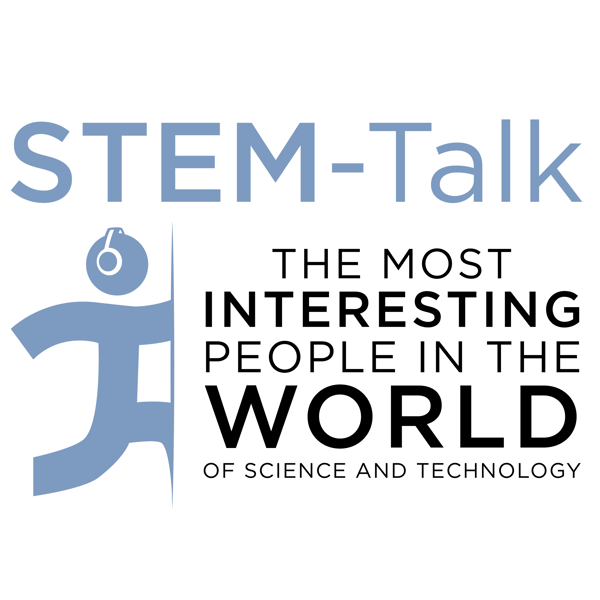Episode 86: Matt Johnson talks about the power and future of human-machine teaming
STEM-Talk
Dawn Kernagis and Ken Ford
4.6 • 694 Ratings
🗓️ 9 April 2019
⏱️ 33 minutes
🧾️ Download transcript
Summary
Transcript
Click on a timestamp to play from that location
| 0:00.0 | Welcome to STEM Talk. |
| 0:01.1 | Stem Talk. |
| 0:02.0 | Stem Talk. |
| 0:03.0 | Stem Talk. |
| 0:04.0 | Stem Talk, where we introduce you to fascinating people who passionately inhabit the scientific and technical frontiers of our society. |
| 0:14.0 | Hi, I'm your host, Don Cornagus, and joining me to introduce today's podcast as a man behind the curtain, Dr. Ken Ford, IHMC's director and chairman |
| 0:21.6 | of the double secret selection committee that selects all the guests who appear on STEM Talk. |
| 0:25.1 | Hello, Don. Great to be here. |
| 0:27.1 | And our guest today is Dr. Matt Johnson, another colleague of ours here at IHMC. |
| 0:31.6 | So Matt's a research scientist who focuses on human machine teaming as it relates to technologies, |
| 0:36.6 | such as robotics, software agents, |
| 0:38.3 | and autonomous vehicles. And these technologies help first responders with disaster responses, |
| 0:43.3 | military operations, and are also used in space and aviation work. |
| 0:46.3 | So Matt joined IHMC in 2002 after a 20-year career as a naval aviator, flying both fixed-wing aircraft and helicopters. |
| 0:53.3 | But before we get to today's interview with Matt, we have some housekeeping to take care of. |
| 1:00.7 | First, we really appreciate all of you who have subscribed to STEM Talk, and we are especially |
| 1:06.7 | appreciative of all of the wonderful five-star reviews. |
| 1:10.9 | As always, the double secret selection committee has been continually and carefully reviewing iTunes, Google, Stitcher, and other podcast apps for the wittiest and most lavishly praise-filled reviews to read on STEM Talk. |
| 1:21.5 | As always, if you hear your review read on STEM Talk, just contact us at STEMTalk at IHMC.us to claim your official STEM Talk |
| 1:28.6 | T-shirt. Today, our winning review was posted by someone who goes by the moniker, Bob and Carrie. |
| 1:36.4 | It's titled The Very Best Podcast, and it reads, I love STEM Talk. I almost salivate awaiting a new episode. Don and Ken are so professional |
| 1:47.1 | and knowledgeable, and their very well-prepared questions elicit tremendously valuable information. |
... |
Please login to see the full transcript.
Disclaimer: The podcast and artwork embedded on this page are from Dawn Kernagis and Ken Ford, and are the property of its owner and not affiliated with or endorsed by Tapesearch.
Generated transcripts are the property of Dawn Kernagis and Ken Ford and are distributed freely under the Fair Use doctrine. Transcripts generated by Tapesearch are not guaranteed to be accurate.
Copyright © Tapesearch 2025.

